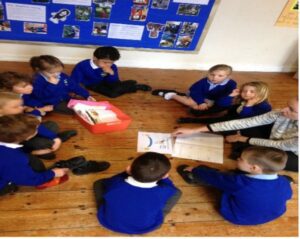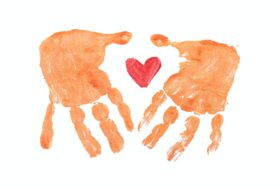How our school developed a stretch and challenge mindset in the Early Years


Learning something new is a challenging process; it requires the learner to take risks, make mistakes, often fail before succeeding and requires persistence and empathy. In an attempt to move towards a more learning centred system, where mistakes are celebrated and learnt from and challenge is the norm, we began to develop “growing our brains” across our Reception classes in a federation of three small infant schools.
This small-scale case study involved five teachers and seven TAs working together throughout a school year. Tight (2017, p.5) suggests a case study in its most basic form is “small scale research with meaning” whilst Yin (1984) defines the case study research method as an empirical inquiry that investigates a contemporary phenomenon within its real-life context; when the boundaries between phenomenon and context are not clearly evident; and in which multiple sources of evidence are used. To this end, pupil observations, staff questionnaires, parent workshops, JPD activities and team learning conversations were used to develop and evaluate our approach.
As part of the Early Years Foundation Stage (EYFS), established in 2008 and revised in 2017, defining educational provision for children under 5 in England, the Characteristics of Effective Learning (CoEL), set out by the Department for EducationThe ministerial department responsible for children’s serv (2012) provide the context for learning in the Early Years in England. Yet it is these statements, of playing and exploring, active learning and creating and thinking critically, that often prove the most problematic for practitioners to understand, provide opportunities for and assess children against. As Claxton (2002) suggest “It is quite possible to help students learn more without helping them become better at learning” (p.15).
Core aim of the case study
One of the core aims of our case study was to develop children to become more self-motivated and engaged in their learning; quite simply to begin the journey of life -long learning. The American psychologist Carol Dweck suggests in her book Mindset: The New Psychology of Success (2006) that we all have different beliefs about the underlying nature of ability. She uses the term growth mindsetThe theory, popularised by Carol Dweck, that students’ bel – “a belief that your basic qualities are things that you can cultivate through your efforts” (p.7) to describe children (and adults) who believe that intelligence and abilities can be developed through effort and persistence, the trying out of different strategies and learning from mistakes. On the other hand, someone with a fixed mindset believes that intelligence and abilities are fixed traits; something that you are born with and can rarely do anything about. To this end we wanted to develop practitioner use and knowledge of CoEL to encourage the children to learn more effectively, show a desire for challenge and develop resilience in the face of failure.
As a federation we had been working on developing the six learning values of thinking, creativity, emotional intelligence, interdependence, independence and spirituality. A staff questionnaire quickly revealed a general confusion between these learning values and the schools’ Christian values.
At this point it was decided that the process needed simplifying to make it useable for teachers and meaningful for children! The learning values became learning characters with an associated finger puppet (for example, Octavia Octopus is very creative; she has lots of different ideas) that have subsequently developed their own short story and accompanying video (green screening practise at a staff meeting helped teachers become more familiar with the characters and the associated learning behaviour).

Fig 1. A slide used to present our learning characters to parents
Puppets in practice
We felt there was enough overlap with CoEL that we would use the same language with the children in Reception, which could then be developed as the children continue through school. To quickly improve staff confidence a character was carefully chosen to focus on each half term across the school and celebrated at a weekly assembly, where children who had shown that learning behaviour were rewarded with a certificate. It made sense, for example, to look at Emotional Intelligence in Spring 2 when the children were well settled in their new classes and Easter and New Life were a project focus.
These characters were used to drive adult directed tasks and praised and valued during child initiated activities. For example, interdependence (or working as a team as it was called with the children) was a timely focus after the excitement of the Christmas holidays so where possible activities such as PE, number, the introduction of paired reading, etc. all started with the introduction, “Today we are practising working as a team, we are going to …” as a precursor to the activity. This deliberate shift in presenting the learning behaviour to the children first bore out Florez and Sammons’ (2013) claim that research shows that learning orientated pupils are more motivated, resilient in the face of failure and achieve better results.
Plan-do-review
After the first term in full-time schooling, when we felt the children were settled and confident enough in the environment and with each other (we made use of the Leuven scales (Laevers, 2005) to assess our summer born children’s wellbeing and involvement in adult directed tasks initially during the Autumn term), we began to make use of the High Scope ‘Plan do review’ model (Morrison 2009) during child initiated learning. The philosophy behind High Scope is based on child development theory and research, drawing on the work of Jean Piaget, John Dewey and Lev Vygotsky. A key component of the High Scope approach is the plan-do-review sequence. Children take the first step in the learning process by making choices and following through on their plans and decisions; developing many of the CoEL.
We adapted the model but in keeping with the underlying principles the children first planned what they wanted to do that session, and whom they want to do it with in their key person group with an adult.


Fig 2: Resources used (including a brain hat!) Plan/Do/Review session
Once they have made a plan, however vague, of what they want to do, they can go and do it. Then, at the end of the session before the classroom is tidied, the children discuss in their groups, what they did and whether it was the same as, or different from, what they had planned.
Initially this is where the adult could model using the language of learning and offer “process praise” such as “You are getting better at writing your name because of all the practice”. Using the analogy of learning to ride a bike without stabilisers (an important milestone in a 4-5 years old’s life) helped them realise that learning can go wrong but mistakes are good if they help us get better next time. After six weeks the children were starting to use this language themselves; “I can nearly do this now, it is a real challenge” and “Can I wear the brain hat now? I have really stretched myself”.


Fig 3: An example of the prompt sheet used with the children to talk about how they had stretched their learning.
Praise during process
Rewards such as wearing the brain hat and getting a successful learner sticker – where the process of learning rather than the finished product was valued – were powerful motivators. This learning language and praise for learning behaviours was shared with parents at a workshop and made up part of the statutory end-of-year reporting process whereby individual children’s CoEL are recorded.
Displaying photographic learning stories of individual children undertaking a learning activity (for example, reading a story might involve looking at the books in the book corner, choosing a book, sitting down and turning the pages) is another example of how the focus in the classrooms shifted to emphasising learning. Displays such as learning walls showed learning processes, not just finished work (product). We also made better use of the CoEL statements on judgements we made on individual children using Tapestry, an online learning journey, endeavoring to attach a CoEL statement to each EYFS statement.
Outcomes and learnings
Parents were encouraged to contribute too, as each half term we asked them to add an example of their child working on that learning characteristic, for example, being like Bertie Bee and working as part of a team. A repeat of the questionnaire about learning characters to staff at the end of the year showed an increase in their knowledge of the difference between our learning characters and Christian values; at the end of the year 80% of staff felt more confident in using the learning characters with their class, whilst 100% could name all six characters and their associated learning attributes!
More work is still needed to assess how this might be reflected in children’s outcomes. Certainly the Year 1 teachers who took on the classes commented on a marked increase in the vocabulary of learning the children were using and their resilient attitude to having a go to new challenges.
Accepting the notion from Earl (2015, p.150), “Research and evidence do not answer questions. Meaning comes through the human act of interpretation” we made use of the work of Dweck on developing growth mindsets and the models of High Scope in encouraging independent learning behaviours to create a fusion of innovations to develop young children’s learning in our setting.
We are not offering any generalisations; our findings are context specific and defined by the social factors and the culture of our federation. Yet by simply changing our focus and emphasis as teachers – “Teaching is one side of the coin of which the other is learning.” (Saunders, 2015, p44) – we have been able to introduce the vocabulary of learning to very young children and prepare them to take risks and feel comfortable with challenge in the Early Years.
The introduction to this article was amended on 11 January 2018 to clarify the author’s argument in the main piece.
References
- Brown C and Rogers S (2015) Knowledge creation as an approach to delivering evidence-informed practice among early years practitioners in Camden (London) In Brown C (Ed) Leading the Use of Research and Evidence in Schools London; IOE Press.
- Claxton G (2002) Building Learning Power Bristol: TLO Publishers.
- Department for Education (2012) ‘Early Years Foundation Stage Framework 2012’ online (accessed online June 1st 2017).
- Dweck C.S (2006) Mindset: Changing the way you think to fulfil your potential New York: Random House.
- Earl L (2015) Reflections on the challenges of leading research and evidence use in schools In Brown C (Ed) Leading the Use of Research and Evidence in Schools London; IOE Press.
- Florez M.T and Sammons P (2013) Assessment for Learning; Effects and Impact London: CfBT.
- Laevers F (ed) (2005) 'A Process –orientated self evaluation instrument' Kind & Gezin and Research Centre for Experiential Education (accessed online August 30th 2017).
- Martin A.J (2015) Growth approaches to academic development; Research into academic trajectories and growth assessment, goals and mindsets. British Journal of Educational Psychology 85: 133-137.
- Morrison G (2009) 'High Scope: A Constructivist Approach' in Childhood Education Today p149-155 (accessed online August 30th 2017).
- Saunders L (2015) ‘Evidence’ and Teaching; a question of trust? In Brown C (Ed) Leading the Use of Research and Evidence in Schools London; IOE Press.
- Tight M (2017) Understanding Case Study Research; Small scale research with meaning. London: SAGE.
- Yin R (1984) Case Study Research; Design and Methods London: SAGE.











Could you please clarify what all of the learning characters each represents ie Birty Bee = team work